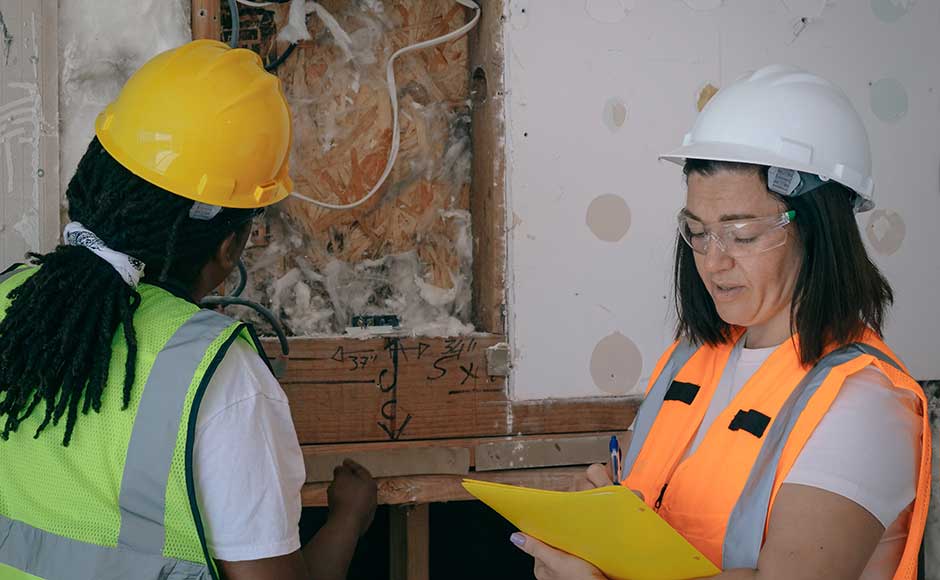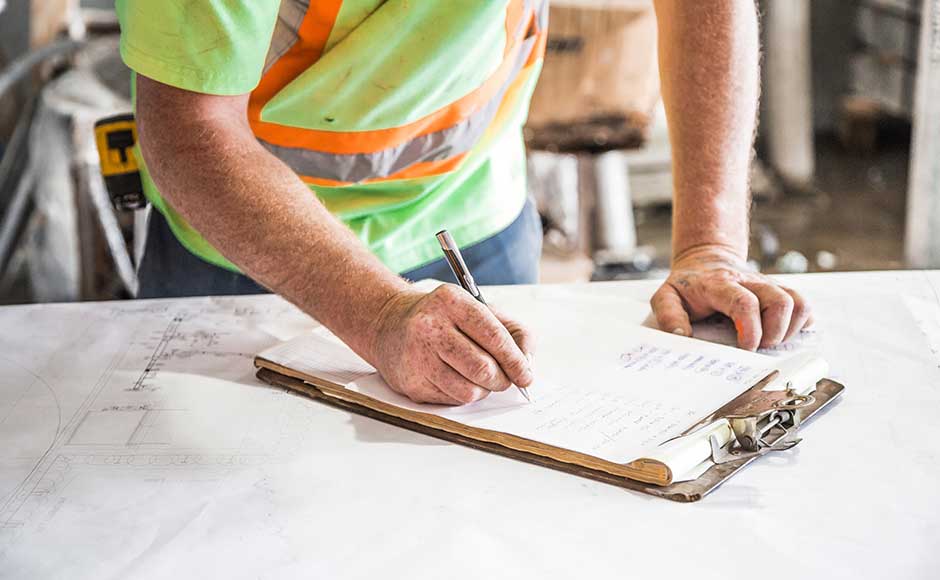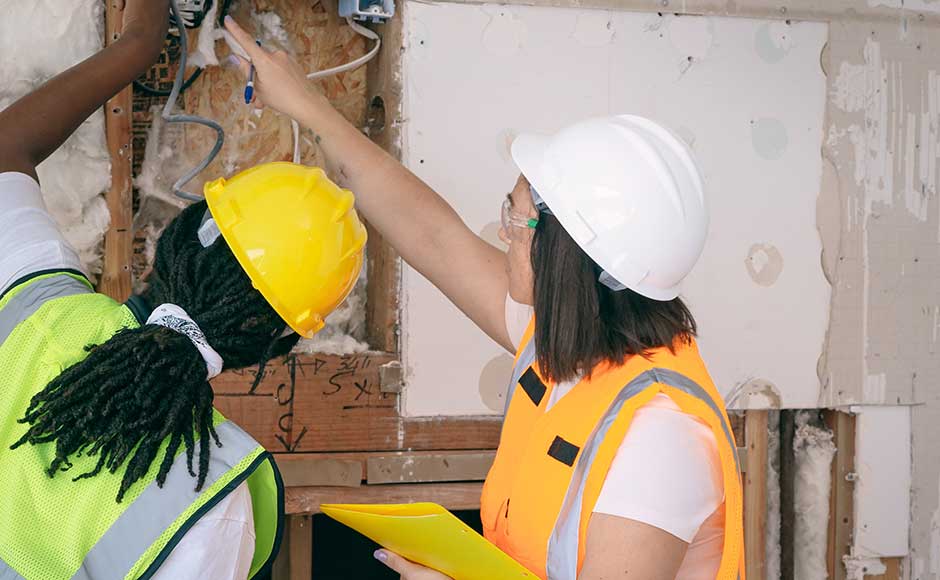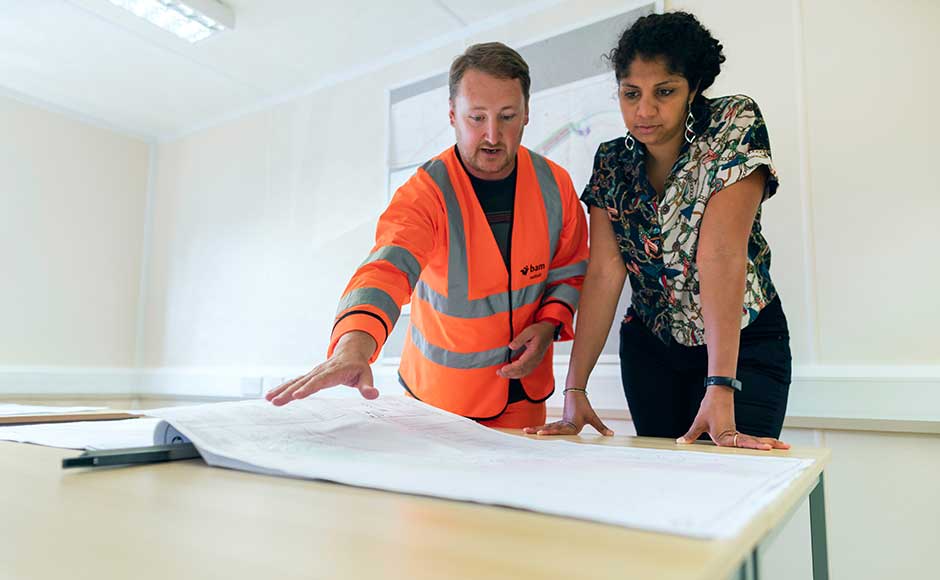Asbestos

Asbestos is a serious public health and safety concern and legislation to protect the health of employees has been in place since 1931. Despite regulatory controls becoming stricter over the past twenty-five years, around 4,500 people die each year in Great Britain from asbestos-related diseases.
Asbestos products themselves are harmless when maintained in good condition. Risk to health occurs when asbestos fibres become airborne and are inhaled. This can happen when Asbestos Containing Material (ACM) becomes damaged or disturbed or is not well maintained. Although it is possible to see ACM in its processed solid format, such as in boards or asbestos pipe lagging, hazardous airborne fibres are microscopic and cannot be seen by the naked eye.
Approved code of practice
The regulations above set out the legal duties and the HSE-published approved codes of practice (ACOP) provides guidance and practical advice on how to comply with those legal requirements.
The entire ACOP document is available on the HSE website for more in-depth understanding, guidance and ongoing reference purposes.
Asbestos management plan
There is no prescribed format for an asbestos management plan, and its exact content will depend on the circumstances of the congregation.
However, it must contain a record of the location, extent and condition of ACM or presumed ACM on the premises. It might also be useful to include photographs of any suspected ACM in the management plan.
The plan must contain an assessment of the risk posed by such ACM and a specification of the measures which are being taken to manage those risks. Measures which should be taken to manage risk include monitoring the condition, ensuring any ACM are properly maintained or, if necessary, safely removed, and ensuring anyone who might come into contact with ACM is made aware of their presence. The plan should also take note of when any such measures were implemented.
It must be reviewed regularly and all control measures (such as monthly inspections) included as evidence to show that these have been done.
The HSE provides an example of what would be considered a suitable asbestos management plan.
Once you have completed the inspection you may want to consider the actions to take if you have indeed identified asbestos or presumed ACM in the building(s).
Asbestos register
An asbestos register should be completed during the initial inspection of the building. Any materials which you are unsure about or unable to access in the building should be presumed to contain ACM.
Please refer to the example register document to familiarise yourself with the information that should be included.
Note down the condition and use the information below to identify the actions required. Also note the estimated amount of materials that might contain asbestos. e.g. 20sq meters of roof lining.

Good condition
- The condition of the material should be monitored at regular intervals
- Where practical, the material should be labelled
- Inform the contractor and any other worker likely to work on or disturb the material
Minor damage
- The material should be repaired and/or encapsulated
- The condition of the material should be monitored at regular intervals. Where practical, the material should be labelled
- Inform the contractor and any other worker likely to work on or disturb the material.
Poor condition
Asbestos in poor condition should be removed
Where you can't get access, e.g. roof void, under flooring wall cavities, presume that these areas contain asbestos.
All materials containing or suspected to be asbestos must be labelled and notices placed on access doors.
The HSE has listed the known types of products that contain asbestos and should be included in the register if they are identified. If you are unsure of a particular material used, you have to safely presume that it contains asbestos until it can be formally identified by a specialist.
Under no circumstances should anyone, including general surveyors or maintenance contractors attempt to, or undertake, any sampling of ACM or any suspected ACM. This must only be undertaken by appropriately trained and competent persons. Please seek specialist independent advice or contact the Church of Scotland General Trustees for further information.
Asbestos risk assessment
Risk assessments are about identifying and controlling associated risks.
Whoever carries out the asbestos risk assessment and visual inspection should be accompanied by the fabric convener or other fabric-minded persons to ensure that they suitably and sufficiently consider all the likely areas and suspected materials on site, the likelihood of the material being disturbed or damaged, and establish the potential risk of ACM exposure and identify who may be affected.

When carrying out an asbestos risk assessment, you must:
- Identify the action to be taken to remove the risk or, if that is not possible, to reduce the risk to as low as possible, e.g. restricted access to areas and warning signage put in place. (Signage should still be placed on suspected materials and access points.)
- Record the findings of the risk assessment and the action to be taken and inform employees and all other building users
- Implement the actions to be taken
- Review and update the risk assessment as required in line with the ongoing asbestos management plan
If you are planning any maintenance or building works in the affected areas where it is likely to be disturbed, we highly recommend you instruct a competent asbestos professional to formally identify the ACM and type(s) present in your building. Your architect or appointed project manager would be able to give advice on avoidance or removal of the ACM if required for planned works. The condition of the identified ACM should be checked and recorded every 6 months in your asbestos register to ensure that its condition has not deteriorated and it has not been disturbed.
Effective asbestos management
If we follow the seven simple steps of effective asbestos management, we can effectively control any ACM found in our buildings and, more importantly, ensure that staff and visitors are kept free from any potential harm or risks posed by asbestos or ACM.
Seven steps to good asbestos management:
- Find out if asbestos is present in your building, including suspected ACM
- Make a record of the location, type and condition of the asbestos
- Clearly sign the area affected to warn others of the potential ACM
- Assess the risk of anyone being exposed to the asbestos
- Prepare a plan on how to manage these risks
- Put the plan into action, monitor it and keep it up to date
- Provide this information to anyone who might work on or disturb the asbestos
Further practical and specific advice is available from the General Trustees Health and Safety department to support the congregations to meet their compliance obligations.
Forms of asbestos and ACM
Asbestos and other ACM remain a continuous hazard in many church buildings due to their historic nature and changes and additions over the decades whilst the materials were still extensively being used.
Main forms of asbestos
The three main forms of asbestos are:
- Blue (known as crocidolite)
- Brown (amosite)
- White (chrysotile)
There are many other forms of asbestos and ACM, as well as composites which are equally harmful. HSE has some examples of what ACM can look like.
Relevant legislation
- The Health and Safety at Work Act 1974 (HSWA)
- Control of Substances hazardous to Health Regulations 2002 (COSHH)
- Management of Health and Safety at Work Regulations 1999 (MHSWR)
- Control of Asbestos Regulations 2012
These regulations require the Charity Trustees to make a suitable and sufficient assessment of the risks from any work liable to expose employees to any substance hazardous to health. This must be done before that work is carried out.
Charity Trustees are also required to assess the risks to other people who are not in their employment (e.g. volunteers, contractors and the general public) who may be affected by the exposure. They are also required to regularly review the risk assessment and make any necessary changes as a result of the review.
The Control of Asbestos regulation 2012 additionally requires the duty holder and person(s) in control of the building to implement an Asbestos Management Plan and hold an Asbestos Register where asbestos or ACM has been presumed or formally identified.
If you have any incident which involves the accidental disturbance or damage to asbestos materials
- Immediately stop any works or access to the area affected, evacuate everyone in the vicinity of the material and ensure containment of any dust or asbestos material by closing doors, hatches, etc.
- If the area disturbed is likely to affect others in or around the building and the dust and particles cannot be contained, the building must be immediately evacuated and closed
- Report the incident immediately to the General Trustees safe buildings team. They will offer further guidance on remedial actions to be taken to suitably manage the hazards and risk.
- No one should re-enter the building until it has been professionally rendered safe by a competent asbestos contractor.
Inspection
The first step is to identify if you have any asbestos or suspected ACM in the building(s).
If a competent professional asbestos surveyor is appointed to undertake an asbestos survey, the Church of Scotland recommends that a management-type survey be commissioned by a UKAS-accredited surveyor, as these are HSE approved and recommended.

The first method to determine if ACM is present is to carry out a non-intrusive visual inspection in house. This can be carried out by the health and safety person but it may be wise to include the fabric convenor as they are likely to have a far better understanding of the building layout and the likely places to check. Asbestos is at most risk of releasing fibres when it is disturbed, so the suspected material must not be disturbed, broken or touched during the visual inspection. Any areas that are inaccessible or considered fragile or hazardous must not be accessed and should be assumed to contain asbestos until a professional assessment confirms otherwise.
Other ways to determine if ACM is present is to look at building plans, drawings, plant installation instructions and other relevant information to identify likely sources of ACM. It is important to be confident and competent in any decision to undertake this method of identifying ACM. The General Trustees highly recommend that a competent professional contractor is instructed wherever possible to carry out the survey.
Inspection checklist
Before the inspection you should compile a simple site plan for your building(s). This will help to ensure that the check has incorporated the entire area of the building(s).
This example of a site map will give a good idea of the areas to include but you may want to extend the diagram to other church buildings and external building materials used.
Checklist considerations
The HSE has compiled a checklist of areas in the building that may contain asbestos or ACM. This is not an exhaustive list and serves only as a guideline of areas to include in the initial check of your building.
Building fabric:
- Corrugated roofing, tiles, 'slates', soffits, gutters, downpipes, walls and panels
- Insulation under the roof, on beams and stanchions
- Boards and panels, and any insulation between these
- Insulation around pipes, on a heater, boiler, calorifier, in storage heaters
- Decorative coatings on walls or ceilings
- Insulation around windows
- Water cistern
- Flues, waste water pipes
- Plastic floor tiles.
Also check outbuildings.
Some of the equipment used within the church building(s) may also contain ACM and should be included in the inspection checklist.

For example:
- Ovens, electrical fuses in distribution, soundproofing, ironing surfaces, insulating mats
- Blankets, fire insulation in or on doors, insulating gloves, vinyl flooring
If ACM is present or suspected, you must:
- Record in writing the type of ACM (tile, boards, lagging etc.), location, condition (intact, good, damaged, broken etc.), and how much material is present
- Clearly identify areas that have not been inspected or surveyed
- Prepare a plan that sets out how the risks from these materials will be managed (asbestos management plan)
- Take the necessary steps to put the plan into action
- Provide information on the location and condition of any suspected ACM to anyone who is liable to work or disturb them.